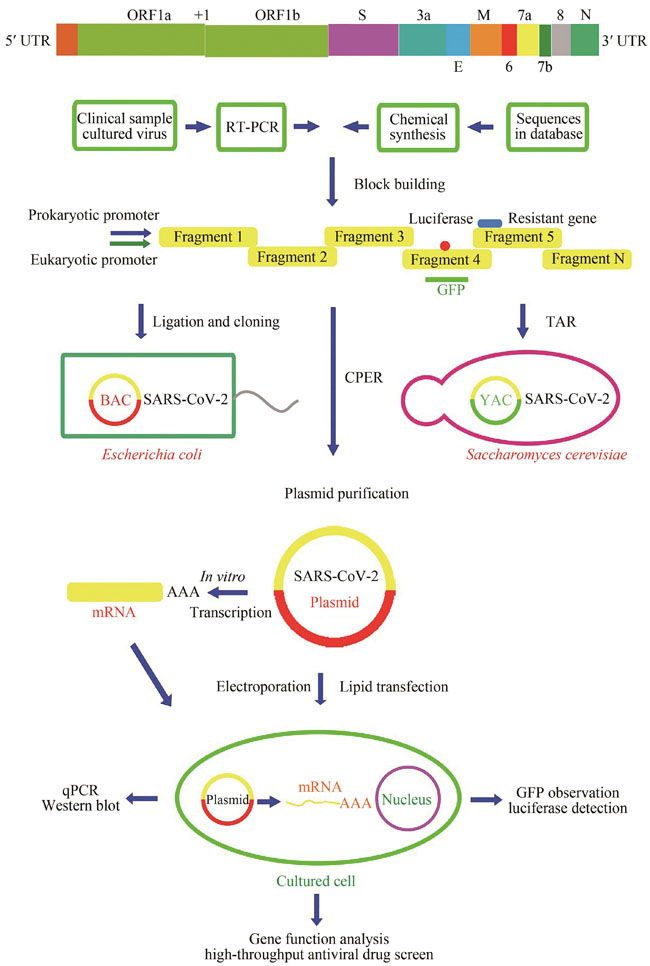From its first report in late 2019 to September 2023, the Corona Virus Disease 2019 (COVID-19) pandemic had accumulatively infected at least 770 million people worldwide, and caused a death toll surpassing 6.96 million. The super-spreading of COVID-19 posed a huge challenge to healthcare systems all over the world, and led to a global economic recession. Later research confirmed that the causative agent is a novel coronavirus, nomenclature Severe Acute Respiratory Syndrome Coronavirus 2 (SARS-CoV-2). This virus possesses a similar genomic structure, and displays many common harmful characteristics of SARS-CoV and Middle East Respiratory Syndrome Coronavirus (MERS-CoV). Due to its acute contagiousness, relevant genetic research and antiviral drug development must be carried out in laboratories with the biosafety level 3 or above, which is insufficient worldwide. Moreover, cost for such experiments is very high, and the processes are tedious, time-consuming and laborious. To overcome these limitations and enable relevant research work conducted in laboratories with the biosafety level 2, global researchers have constructed a series of SARS-CoV-2 replicons using cutting-edge reverse genetic techniques. By in vitro transcription and electroporation or liposome-related transfection, mRNAs or plasmids carrying replicons can be delivered into diverse susceptible host cells. These replicons can replicate, transcribe, and translate inside permissive cells through their transcription and translation machines. With one or more structural genes deleted, no functional virion can form to lose virus infectivity. At the same time, reporter genes, such as green fluorescent protein (GFP) and/or luciferase gene, can be inserted into the replicons to report the levels of virus replication and transcription, indicating the functions of genes or the effectiveness and efficacy of antiviral compounds. By co-transfection with trans-complemental proteins, such as stomatitis virus glycoprotein, virions can be formed with a feature of the single infection of cells without SARS-CoV-2 receptors, such as angiotensin-converting enzyme 2 (ACE2), or transmembrane serine protease 2 (TMPRSS2). Resistance-selecting genes can be introduced into the proper position of replicons to select stable cell lines expressing replicons. Thus, cell lines stably expressing replicons can be obtained through multiple passages in the presence of selectable drugs, such as G418. In this article, we summarize synthesis methods for constructing SARS-CoV-2 replicons, such as in vitro ligation by type Ⅱ or ⅡS restriction enzymes, Bacterial Artificial Chromosome (BAC), yeast transformation-associated recombination (TAR), and cyclic polymerase extension reactions (CPER). Moreover, we review single-cycle and stably expressed SARS-CoV-2 replicon systems, which provide a solid foundation for studying the SARS-CoV-2 gene function, pathogenesis, virus-host interactions, vaccine assessment, and large-scale high-throughput screening of antiviral drugs to contain transmission of this pandemic.
